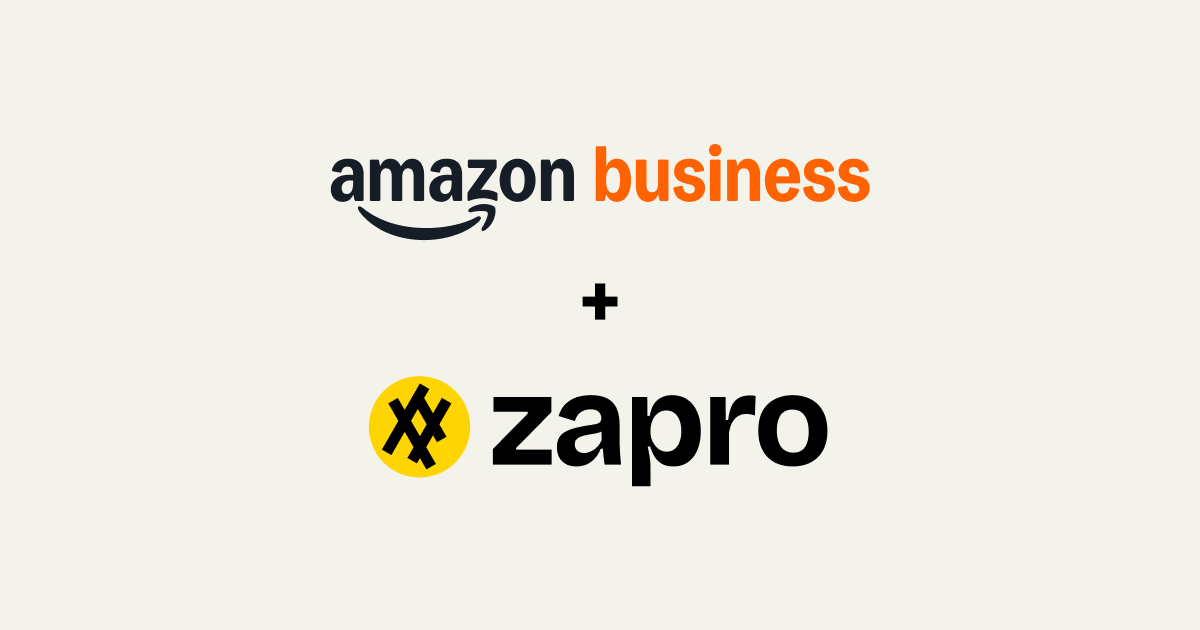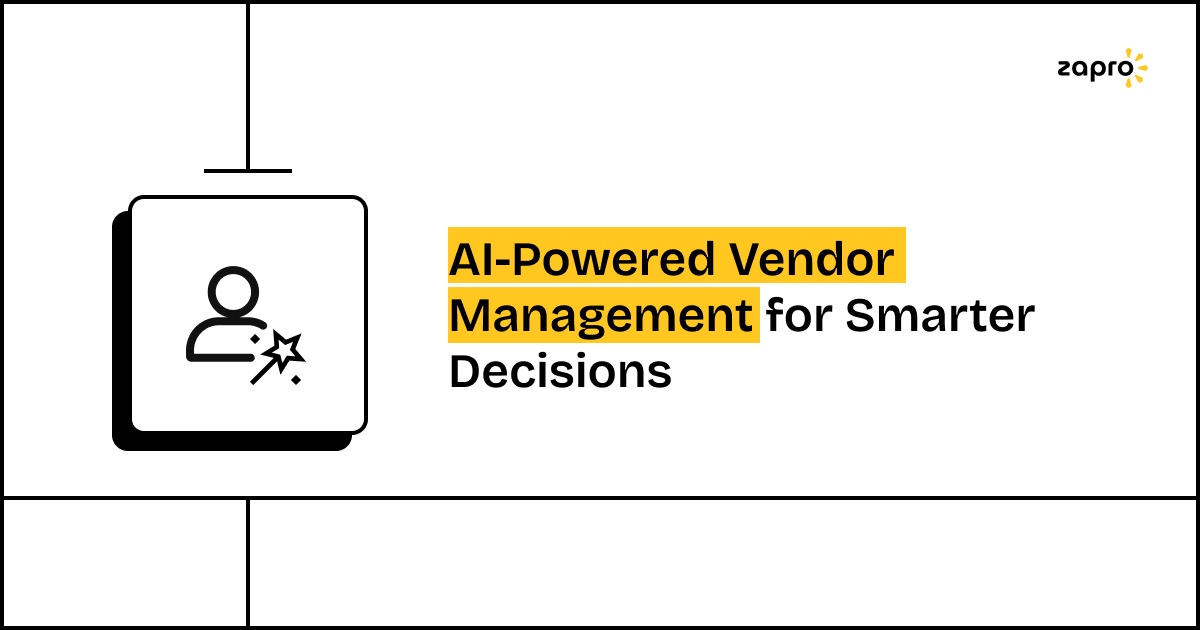The Procurement Manager displays an On-Time Delivery (OTD) score from the logistics system during a strategic supplier meeting but the Quality Manager immediately responds with vendor defect data from the Quality Management System (QMS) which shows high customer return rates. Both parties present valid points.
The data itself does not create problems because different systems operate independently from each other. The performance data from vendors exists across different systems which include ERP and CRM and finance applications and specialized project management tools. The absence of a unified data platform which procurement uses leads to information gaps that prolong decision processes and threatens the entire vendor management analytics framework.
This blog post here explains essential methods to merge vendor performance information from different systems into a unified platform which enables complete vendor management and maximizes vendor ecosystem value.
Introduction: The Problem of Fragmented Vendor Data
For too long, procurement has operated with a “broken windshield” view of its suppliers. The evaluation of performance occurs through individual system assessments starting with logistics performance followed by financial status evaluation and then contract compliance assessment.
The current reactive method of working in separate silos forces us to spend time resolving different reports while we should concentrate on supplier management and strategic planning.
Why Siloed Data Hinders Effective VPM
The separation of data creates obstacles which result in poor decision-making processes:
- Inconsistent Views: The financial team views the vendor as compliant based on financial data but legal staff identify substantial regulatory threats from the recent audit results. The system lacks a unified risk assessment system.
- Delayed Insight: Aggregating data becomes a painstakingly manual effort, meaning reports are historical by the time they are compiled, preventing real-time proactive supplier management.
- Poor Predictive Capability: Advanced techniques like predictive vendor performance cannot work when the model only has one facet of information (e.g., only OTD data, but not capacity utilization data).
The solution is procurement data integration, establishing one centralized location where all information about a supplier is compiled, standardized, and immediately accessible.

AI agents will augment/automate ~50% of business decisions by 2027.
Sources of Vendor Performance Data
Achieving unified vendor data requires identifying all the systems that contribute to a supplier’s story. The sheer variety of data facets often explains the complexity of procurement data integration.
1. Procurement Systems (Contracts, POs)
These systems establish the essential commercial information which serves as the foundation:
- Data Points: The system contains data points which include contractual obligations with SLAs and KPIs and pricing terms and authorized spend limits and Purchase Order (PO) historical records and contract expiration dates.
- Value: Defines the baseline performance targets and provides financial accountability data.
2. ERP Systems (Invoices, Payments, Delivery)
The ERP system operates as the official database which tracks operational and financial data:
- Data Points: The system contains payment records for invoices together with delivery timestamps and stock levels and financial records for both parties.
- Value: Provides confirmation of transactional performance and financial health indicators for both parties.
3. CRM Systems (Customer Feedback, Sales Impact)
The Customer Relationship Management system contains customer feedback which serves as essential performance data:
- Data Points: The system contains data points which include customer complaints about particular products and CSAT scores and NPS ratings that result from service delivery and warranty claim information.
- Value: Directly links supplier quality to customer satisfaction and helps justify vendor incentive programs tied to customer experience.
4. Quality Management Systems (Defect Rates, Audits)
QMS tools enable organizations to handle technical and operational quality regulation through their systems:
- Data Points: The system tracks defect rates for each shipment while maintaining root cause analysis logs and compliance audit scores and material traceability records are also stored in the system.
- Value: Provides the hard data needed to assess the true cost of quality and long-term vendor risk management.
5. Project Management Tools (Deadlines, Scope Adherence)
For strategic, services, or IT suppliers, project tools are essential:
- Data Points: Milestone completion rates, scope adherence, resource allocation logs, and time-to-completion metrics (especially for IT or marketing projects).
- Value: Measures the effectiveness and efficiency of collaborative, complex engagements.
6. External Data (News, Financial Health, Risk Scores)
These data sources provide context on the vendor’s stability and environment:
- Data Points: Credit ratings, financial solvency scores, negative news alerts (geopolitical, legal dangers), and industry analyst reports.
- Value: Fuels predictive vendor performance models and provides early warnings of potential supplier failure.
Challenges of Data Integration in VPM
When trying to achieve procurement data integration across these many facets of systems, teams inevitably encounter significant hurdles.
Data Inconsistency and Duplication
The most frequent and time-consuming problem that users encounter.
- Example: The ERP system identifies the supplier as “ABC Corp” but the Contract Management System shows the name as “ABC Corporation, Inc.” The systems cannot identify these records as matching entities which results in two separate incomplete data entries.
- Impact: Flawed analysis and difficulty generating an overall risk profile.
Lack of Standardization and Data Models
Different systems track the same metrics differently. Your ERP might measure OTD by date received, while your logistics software measures OTD by date shipped.
- Impact: The lack of comparable performance scores between systems creates an impossible situation for procurement teams to identify a single authoritative source of truth.
Technical Complexity and Resource Constraints
The process of uniting outdated systems without API support with contemporary cloud applications presents significant technical challenges. The integration process needs IT specialists along with additional software components and continuous system support which procurement departments typically do not have access to.
Security and Privacy Concerns
The process of uniting sensitive information from financial audits and pricing terms and proprietary customer feedback creates substantial security and regulatory challenges. System integration demands thorough evaluation of security protocols and data protection standards and location requirements.
Strategies for Effective Data Integration
A solution to these problems demands a systematic method which combines governance principles with technological solutions.
Defining a Master Data Management (MDM) Strategy for Vendors
The first essential step requires MDM implementation. The organization achieves data element uniformity through MDM which protects essential organizational information.
- Action: The organization needs to create a single Supplier ID which must appear in all connected systems including ERP and CRM and other systems. The organization needs to create uniform rules for supplier identification and address formatting and data organization.
Leveraging APIs and Middleware for System Connectivity
The maintenance of point-to-point custom integrations becomes too complicated to handle. The solution involves implementing contemporary integration approaches:
- APIs: APIs enable systems to exchange data through real-time communication through Application Programming Interfaces (APIs).
- Middleware/Integration Hubs: The integration process requires specialized tools known as iPaaS which function as middleware to standardize data transformations between systems and the VMS..
Implementing a Centralized Vendor Management Platform (VMS)
A VMS should be the central aggregation point—the single source of truth procurement.
- Role: The VMS doesn’t necessarily replace the ERP or CRM, but it pulls the crucial vendor data from all sources into its own centralized data model. This allows for unified vendor data viewing and analysis without impacting the underlying transactional systems.
Data Governance and Quality Controls
Integration is an ongoing process, not a one-time event.
- Action: Establish a data governance council with representatives from Procurement, IT, and Finance. Define clear ownership for data quality. Implement automated data quality rules within the VMS to flag and cleanse inconsistent or incomplete vendor records automatically.
Transform Your Vendor Data into Strategic Insights

Benefits of a Unified Vendor Performance Data View
The outcome of successful integrating vendor performance data is a massive uplift in strategic capability, transforming the procurement team into a powerful force for the organization’s rapid growth.
Holistic Performance Insights and Cross-Functional Visibility
Instead of a simple “OTD Score,” you get a unified vendor data dashboard showing OTD, quality defects, customer complaint mentions, and financial viability side by side. This provides a holistic picture of true supplier health and risk.
Improved Decision-Making and Strategic Sourcing
The sourcing team gains instant access to complete vendor performance records from all systems which enables them to make better vendor selection choices and purchase decisions. The organization bases its strategic choices on factual evidence instead of depending on personal instincts or the most vocal opinions.
Enhanced Risk Management and Compliance
The system provides immediate risk assessment capabilities through its unified vendor information database. The system detects potential supplier risks through financial warning signals from external data and compliance problems from QMS which enables early supplier management intervention to stop small issues from becoming major supply chain threats.
Streamlined Reporting and Audit Trails
The system automates procurement data integration which reduces analyst work because they no longer need to perform manual data handling. The system generates precise reports that maintain consistency while providing complete audit trails which fulfill all regulatory and organizational governance standards easily.
Zapro.ai: Your Platform for Unified Vendor Data
Managing many facets of data integrations manually is a technical and financial burden. Zapro.ai is designed specifically to serve as the central hub for all vendor information and performance data.
Zapro.ai offers robust, pre-built integration capabilities with existing ERP (SAP, Oracle), finance, and specialized systems. By centrally storing, normalizing, and standardizing all supplier performance data, our platform guarantees a consistent vendor data view, real-time vendor management platform analytics, and a rectifying single source of truth procurement that can be traced to your whole organization. This gives IT leaders, procurement operations managers, and CPOs the ability to see and control everything, thus speeding up their transition to proactive supplier management.
Conclusion: Unlocking the Full Potential of Your Vendor Ecosystem
The time of isolated data has passed. In order to have truly holistic management and make the most of vendor ROI, organizations need to be absolutely integrating vendor performance data.
With a centralized, unified vendor data strategy in place, procurement teams are no longer just watching transactions. They convert the data cacophony into strategic clarity which is a great enabler of quicker decisions, better risk management, and the nurturing of a supplier network that not only is efficient and high-performing but also able to grow rapidly.

Meet the Future of Vendor Management
Zapro eliminates costly data silos and manual reconciliation. Our intelligent VMS platform unifies vendor insights, reduces errors, and accelerates decision-making.
Don’t miss our weekly updates
We’ll email you 1-3 times per week—and never share your information.

 Healthcare
Healthcare Financial Services
Financial Services Technology
Technology Venture Capitalist
Venture Capitalist Chief Procurement Officer
Chief Procurement Officer Chief Financial Officer
Chief Financial Officer




